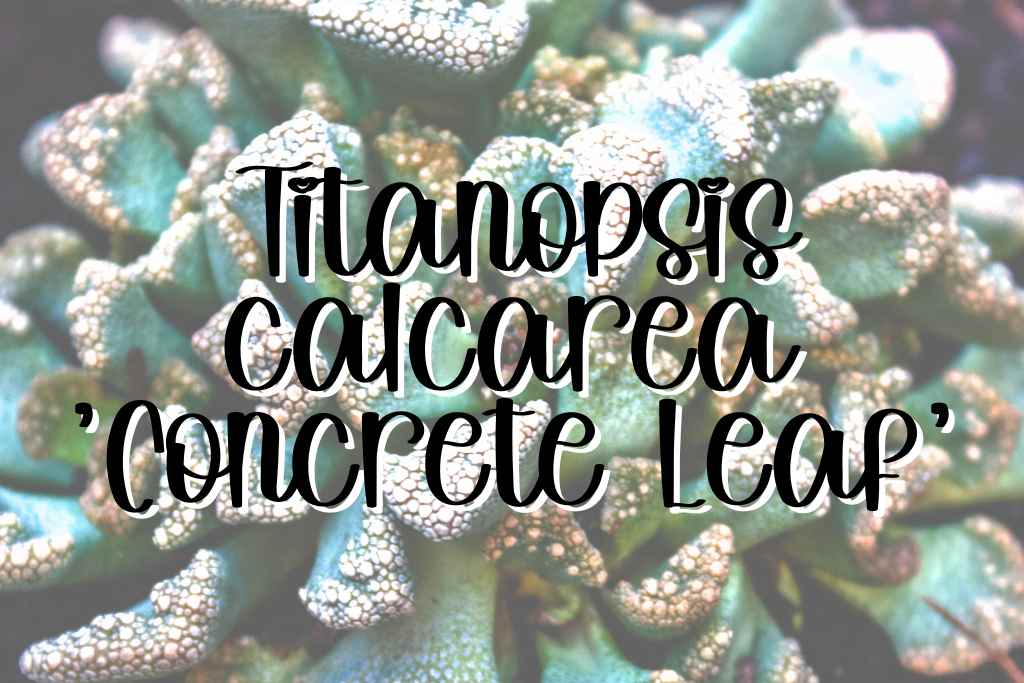If you’re a fan of unusual plants, the Titanopsis calcarea, also known as the ‘Concrete Leaf’ succulent, might be right up your alley. In this comprehensive care guide, we’ll cover everything you need to know to keep your Titanopsis thriving, from its natural habitat to the best watering practices. Let’s dig right in!
Dig in!
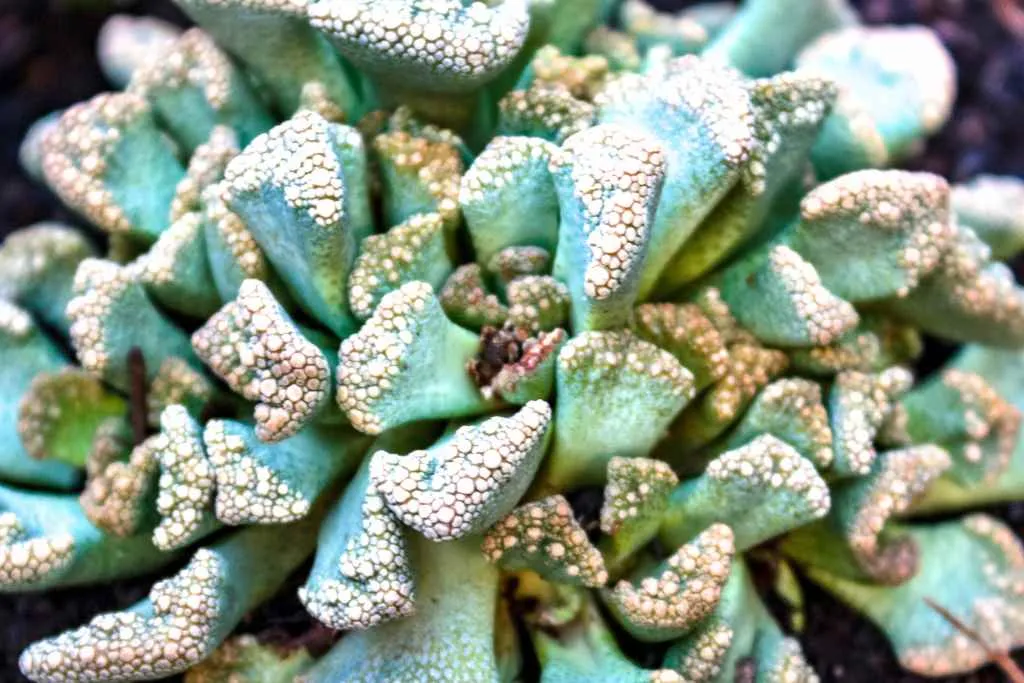
What is Titanopsis calcarea ‘Concrete Leaf’?
Titanopsis calcarea ‘Concrete Leaf’ is a stunning succulent native to South Africa. It belongs to the Aizoaceae family and is commonly referred to as the concrete leaf succulent due to the rough, bumpy texture of its leaves. But don’t let its tough exterior fool you; this plant needs just as much care as any other succulent.

Source: Etsy
Natural habitat
In their natural habitat, Titanopsis calcarea ‘Concrete Leaf’ grows in rocky crevices and arid conditions, often found at high elevations. These plants have adapted to survive in harsh environments, and understanding their natural habitat is crucial for providing them with the proper care.
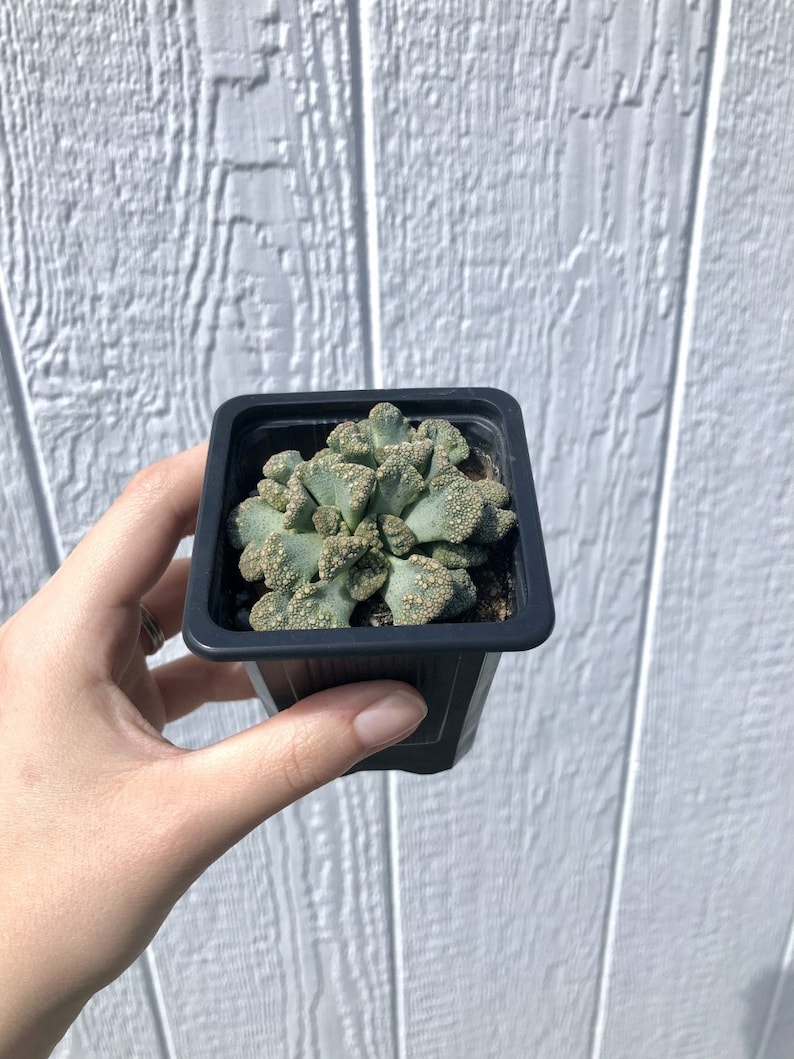
Source: Etsy
Growth rate and cold hardiness
Titanopsis calcarea ‘Concrete Leaf’ is a slow-growing succulent, which means that it won’t rapidly outgrow your space or require frequent repotting. Although it’s native to South Africa, this succulent is surprisingly cold hardy, able to tolerate temperatures as low as 20°F (-6°C).

Source: Etsy
Is it toxic?
Good news for pet owners: Titanopsis calcarea ‘Concrete Leaf’ is not known to be toxic to animals or humans. However, it’s still best to keep it out of reach from curious pets and children that might be tempted to take a bite.
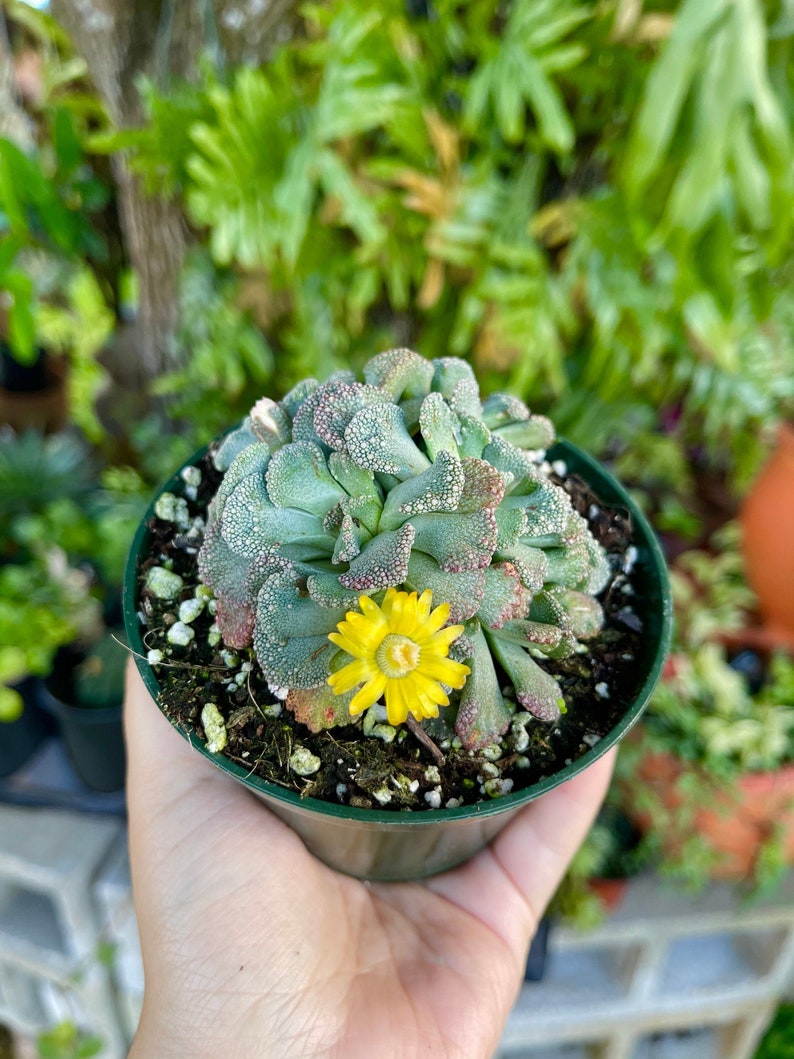
Source: Etsy
Caring for a Titanopsis calcarea ‘Concrete Leaf’
To keep your Titanopsis happy and healthy, follow these tips on soil, watering, light, and temperature.
Proper soil mix
A well-draining soil mix is crucial for preventing root rot in your Titanopsis calcarea ‘Concrete Leaf’. Choose a mix specifically designed for succulents, or create your own by combining equal parts potting soil, perlite, and coarse sand.
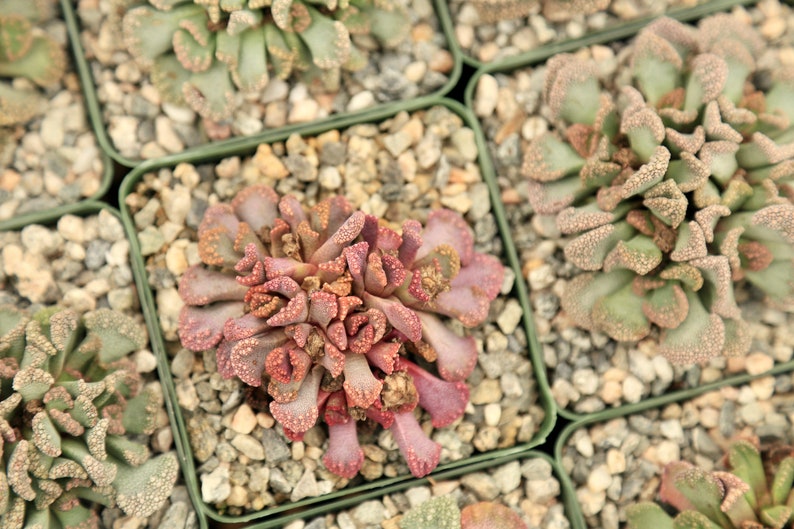
Watering schedule
Overwatering is a common issue when caring for succulents. To avoid this problem, wait until the soil is completely dry before watering your Titanopsis calcarea ‘Concrete Leaf’.

Succulent fertilizer available to purchase on Etsy.
How often should you water?
As a general rule, water your Titanopsis every 7-10 days during the growing season (spring and summer) and reduce watering to once every 2-3 weeks during the dormant season (fall and winter). Keep in mind that your plant’s specific needs may vary depending on its environment, so always check the soil before watering.
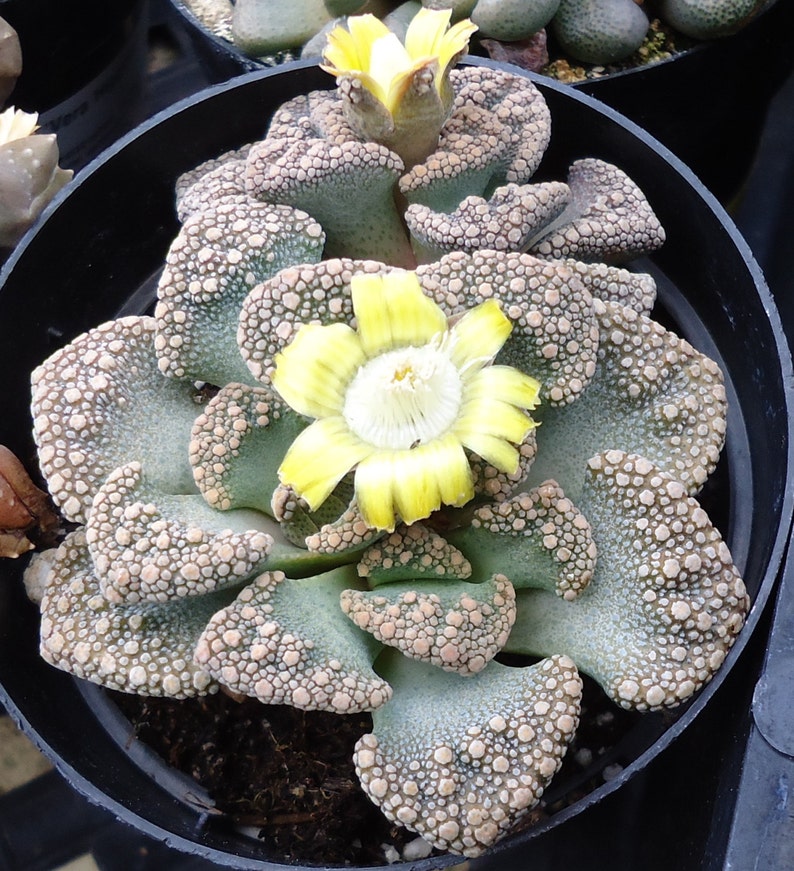
Source: Etsy
Lighting requirements
Titanopsis calcarea ‘Concrete Leaf’ thrives in bright, indirect sunlight. Ideally, provide your plant with 6-8 hours of bright light each day. If you’re growing your succulent indoors, place it near a south or west-facing window for the best light exposure.
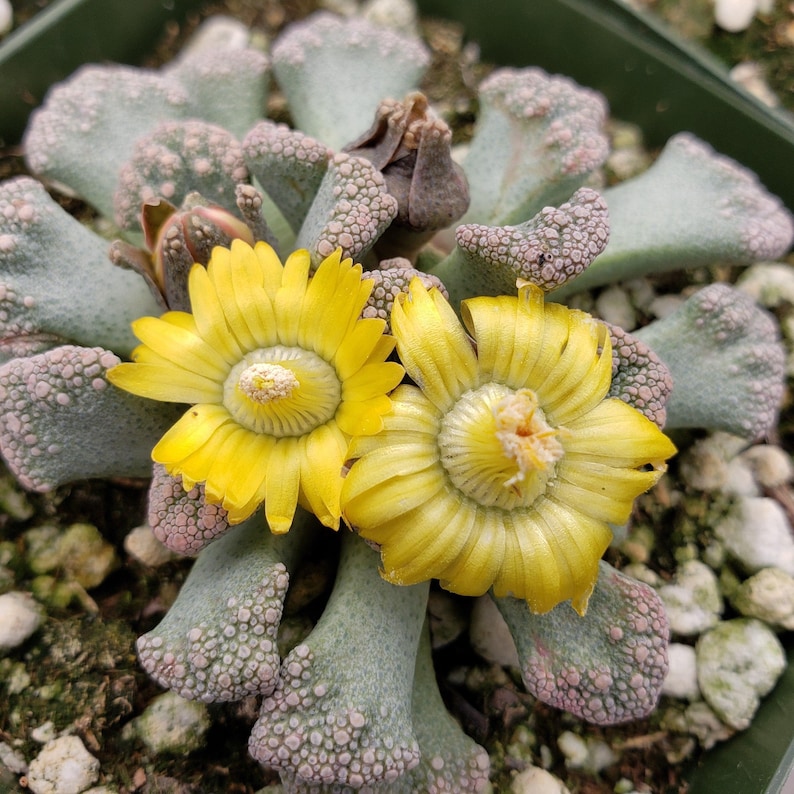
Source: Etsy
Temperature and humidity
As a native of arid regions, Titanopsis calcarea ‘Concrete Leaf’ prefers low humidity and warm temperatures. Aim to keep your indoor environment between 65-80°F (18-27°C) during the growing season and slightly cooler, around 50-60°F (10-16°C), during the dormant season.

Source: Etsy
Propagation
Sow Titanopsis seeds in a well-draining soil mix and keep them slightly damp. Germination can take anywhere from a few days to a few weeks, so be patient. Once the seedlings have developed a few true leaves, you can transplant them into individual pots.
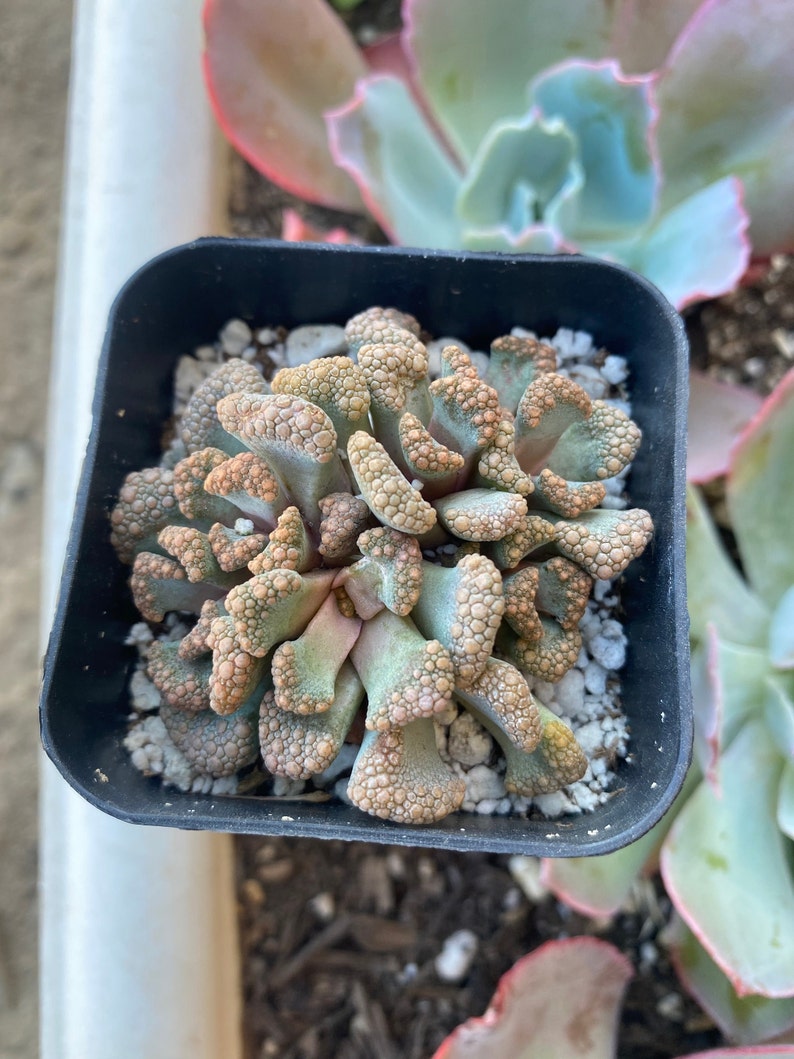
Source: Etsy
Common problems
As with any succulent, Titanopsis calcarea ‘Concrete Leaf’ is prone to a few issues, including:
- Overwatering: Keep an eye on your plant’s watering needs and always check the soil before watering. Overwatering can lead to root rot and eventually kill your succulent.
- Pests: Mealybugs and aphids are common pests that may attack your Titanopsis. If you notice any signs of infestation, treat your plant with insecticidal soap or neem oil.
- Sunburn: Although Titanopsis calcarea ‘Concrete Leaf’ enjoys bright light, direct sunlight can cause sunburn on the leaves. To prevent sunburn, gradually acclimate your plant to increased sunlight and provide shade during the hottest part of the day.
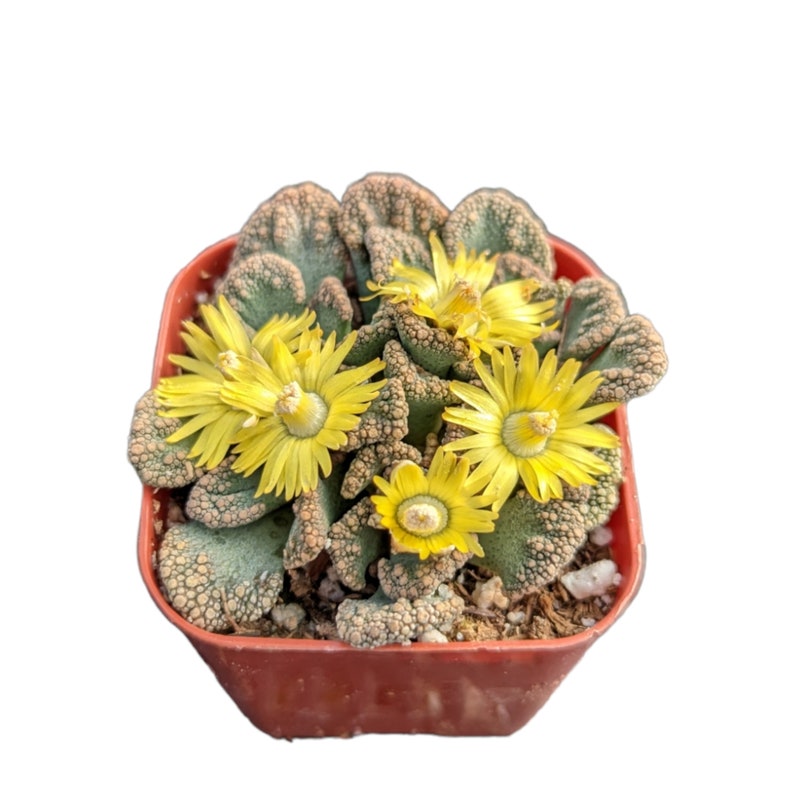
Source: Etsy
Now that you’re armed with the knowledge to care for your Titanopsis calcarea ‘Concrete Leaf,’ you can confidently add this unique succulent to your collection. Remember to provide well-draining soil, a proper watering schedule, bright indirect light, and a suitable temperature range. With patience and dedication, you’ll soon become an expert in caring for this fascinating plant. Happy cultivating!

